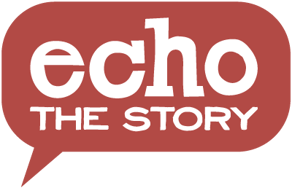A Guide to Using Echo the Story Remotely
If you’ve exploring how your high school youth can engage with scripture while they form and deepen connections with each other, Echo the Story fits the bill. Because of its reflective content and conversational style, Echo is well-suited for remote learning. The focus on the biblical narrative and storytelling through videos, journaling, and discussion means that Echo the Story can be used online with few changes needed. Here’s how:
- First, decide on whether you want to use the 12-session or 36-session version. The 12-session version will get you through the fall. If you want to plan for your whole program year, choose Echo the Story 36.
- Second, order the resources you’ll need to lead Echo the Story. Leader Guides and lesson DVDs are available for purchase, or you can access this content with a Sparkhouse Digital Youth subscription. You’ll need to purchase a Sketch Journal for each student. You could also include some pens, colored pencils, or markers for them to use in their journals.
- Third, review the format for each lesson so you’re familiar with the ways that Echo the Story revisits and builds on past lessons before presenting new content. See the guide below for more ideas.
- Fourth, develop and publish your lesson calendar, assemble materials for each student that you can mail or deliver, and practice using the video-playing technology you’ll use during each remote lesson.
Here’s a quick look at the six parts of each Echo the Story lesson. Few changes are needed for you to offer sessions remotely. The Sketch Journal is an essential part of the experience for students, so make sure they each have one.
Rewind: Plan a quick review of past sessions by showing the animated video. Make sure you know how you’ll show the video, whether by streaming or playing the DVD.
Prepare: Youth sketch their own version of the session’s symbol, talk through a metaphor for the Bible, and read about the story. Just like Echo the Story gives kids a chance to learn and respond in different modalities, you can experiment with different ways that youth can respond remotely, like showing their sketches, writing their ideas in the Chat box, or telling their responses.
Imagine: Youth look at the image in their Sketch Journals as they hear the storytelling script twice. Plan how you’ll share the script with both readers.
Capture: During the second reading, ask youth to sketch or write their responses to the question on the Capture page of their Sketch Journals.
Remix: This activity encourages students to choose the ways that best connect with how they process and reflect. Plan for them to sketch, doodle, or write their retelling of the story in their Sketch Journals.
Connect: Wrap up your time together with this activity that asks kids to share their work. You can also ask questions (including the Final Question) that help draw out kids’ own observations from the story.
Each Sketch Journal also includes six Explore ideas for learning more about the story on their own time. Most of these ideas can be done safely and socially distanced in their homes and neighborhoods.
Learn more about the guidelines for using Sparkhouse resources, including video, remotely by checking out our frequently asked questions.
Find the resources you need for Colaborate at wearesparkhouse.org/echo.

